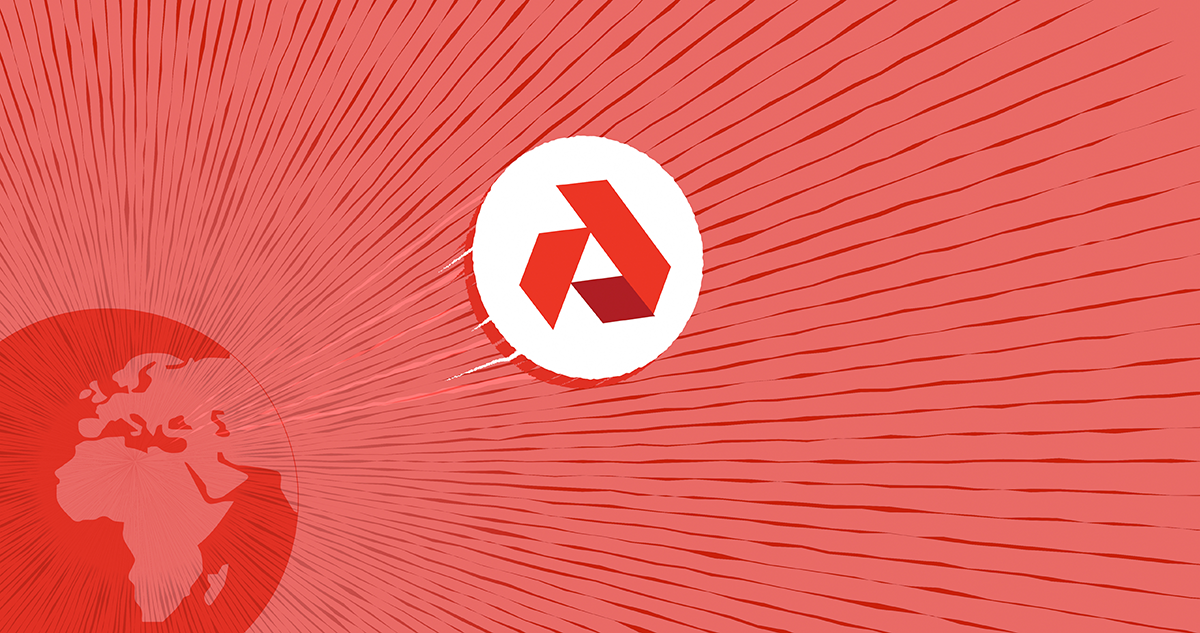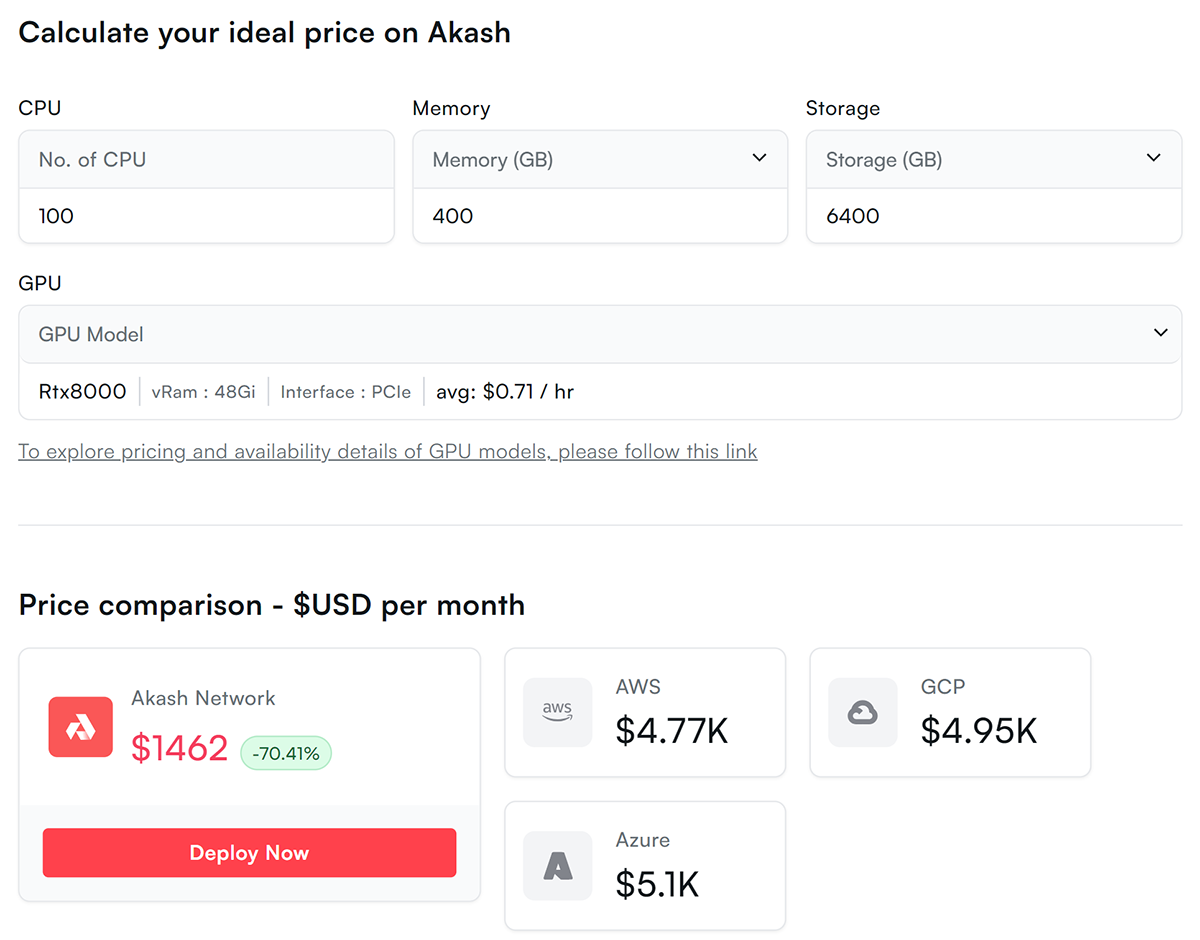Akash: A Global, Decentralised Compute Marketplace

Disclaimer: Your capital is at risk. This is not investment advice.
Token Takeaway: AKT;
Akash is a blockchain-powered, open-source network that facilitates the trading of computing resources. It’s a universal computing powerhouse that aims to power the next generation of technology. Although it provides a real-world use case, the AKT token has significantly underperformed its peers and the broader market. This Token Takeaway will take a deep dive into the intricacies of Akash, explore the decentralised computing sector and analyse the value proposition of its native token, AKT.
Overview of Akash Network
The initial development of Akash began in 2014, spearheaded by its founders, Greg Osuri and Adam Bozanich. After several years of research and development, they officially launched the platform in March 2018. Akash's primary mission is to democratise cloud computing by leveraging blockchain technology. It provides a purpose-built, peer-to-peer (P2P) computing engine designed for a wide range of general-purpose use cases. Notably, Akash is the world’s first open, decentralised cloud built on a censorship-resistant, permissionless, and community-governed network.
According to Crunchbase, Akash raised $2m in an undisclosed venture round in March 2020. Digital Asset Capital Management and Infinite Capital were two of the supporters.
What Problem Does Akash Network Solve?
In the modern digital era, virtually every application requires substantial computing resources to process data efficiently. This demand is further amplified by the rapid adoption of artificial intelligence (AI) and the constantly evolving field of machine learning. As AI technologies advance, the necessity for robust computing power continues to escalate, particularly for training complex generative AI models. These models demand significant computational capacity to handle their intricate algorithms and large datasets.
Moreover, the expansion of Internet of Things (IoT) devices also contributes to the growing need for distributed computing resources, as these devices generate vast amounts of data that require processing. Additionally, industries such as healthcare, finance, and entertainment are continuously seeking enhanced computational capabilities to support innovations like real-time data analysis, automated trading systems, and immersive virtual experiences.
The majority of the Cloud Computing market is dominated by three centralised behemoths - AWS, Google Cloud, and Microsoft Azure - giving them disproportionate control over what could arguably be deemed as the most crucial resource of the digital age. Akash Network aims to address this issue and the evolving computing demands by offering a decentralised, blockchain-based cloud computing marketplace. This platform not only enhances accessibility but also ensures scalability and significant cost-effectiveness, making it an attractive option for developers and enterprises alike.
Cloud Computing Market
Today, most computing is leveraged from centralised cloud computing platforms. These platforms offer round-the-clock customer support, intensively audited software, and thousands of personnel for maintenance, making them a favourable option for clients.
Since Akash is a P2P network maintained by the community, support is offered through community members and core contributors via chat forums. However, on top of being decentralised and open source, one of Akash’s key selling points is its cost-effectiveness. According to their website, compute services on Akash are up to 85% cheaper than its centralised counterparts.
Akash Price Comparison Tool

The price comparison tool on Akash claims that the monthly cost for 100 CPUs, each with 4GB of memory and 64GB of storage, is $1462 on the platform. In contrast, similar services from centralised providers would cost around $5,000. This significant price difference means Akash offers the same computing resources at a 70% discount compared to its centralised counterparts. This substantial cost-saving certainly makes Akash a platform worth considering.
The decentralised cloud computing market features several competitors, each offering services tailored to different use cases. For instance, Filecoin and Arweave are decentralised cloud storage platforms. Filecoin uses a pay-as-you-go model, while Arweave charges a one-time fee for indefinite data storage. Another competitor, Cudos, provides a similar service to Akash but is a smaller platform, currently ranking 509th by market cap. Despite being around for some time, Cudos has struggled to grow and remains at the same levels as it was in August 2021. Finally, Render Network is another blockchain-powered cloud computing platform. On the surface, Render and Akash share many similarities and employ similar architectures.
Akash Network vs Render Network
| Akash Network | Render Network | |
|---|---|---|
| Fully Diluted Market Cap | $1.2bn | $3.5bn |
| Ranking by Market Cap | 85th | 33rd |
| Addressable Market | General purpose cloud computing | Graphics rendering |
| Open Source | Yes | No |
| Native Blockchain | Akash | Solana |
| Token Utility | Blockchain gas fees, payment for services and network security | Payment for services |
| Staking | Real staking APY is 1.81% (excluding inflation). | No staking. |
| Permissionless | Yes | No |
Source: CoinMarketCap, Akash Stats, ByteTree
Initially operating on the Ethereum blockchain, Render Network recently migrated to Solana due to high fees and scalability bottlenecks. Its native token, RNDR, cannot be staked or used to pay gas fees, limiting its utility compared to Akash's native token, AKT. AKT serves as the native utility token of the Akash blockchain, enabling it to be used for gas fees and staking to secure the network. I’ll cover the AKT tokenomics in more detail later on.
Another notable difference between Render and Akash is their target markets. Render Network primarily focuses on graphics rendering, while Akash is a more versatile platform that is suitable for various use cases. Akash is currently being utilised for tasks such as training generative text-based engines AkashChat and text-to-image engine sdxl. AkashChat is an alternative to ChatGPT, whereas sdxl is an alternative to Midjourney. According to their website, both are powered by computing resources from the Akash Supercloud. AkashChat and sdxl are not as good as their centralised counterparts yet, but they are constantly evolving.
Finally, the blog on the Akash website highlights further case studies, including a patient data management service for the healthcare sector. This broad applicability makes Akash a more general-purpose solution with a high growth potential.
How Does Akash Network Work?
The Akash blockchain was developed using the widely popular Cosmos Software Development Kit (SDK), employing the highly secure and efficient Tendermint consensus engine for network security. The Cosmos SDK and Tendermint combination provides Akash with a cost-effective, scalable, and secure blockchain infrastructure. The broader Akash ecosystem consists of three primary components: Providers, Clients and Validators.
